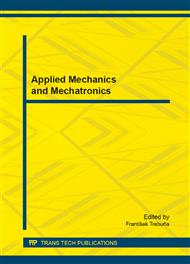p.430
p.436
p.443
p.450
p.467
p.472
p.478
p.484
p.490
Laboratory Experiment of New Cutting Materials in Milling Processes
Abstract:
The development of manufacturing technology is mostly given by economics, environmental trends and the development of cutting materials and machine tools. Manufacturing is a significant part of the worldwide economy. Machining (material removal processes) represents major part of production costs. This paper yield inquiries into the hard and precise milling with a focus on force effects in experimental machining, tool wear and final surface qualities (roughness, micro hardness). The precision machining of hardened steel differs from conventional machining in terms of the hardness of the workpiece materials and the cutting tool materials that are required. Hard materials are characterized by high hardness (> 45 HRC) and abrasiveness. Machining processes require cutting tools of much higher hardness and also higher resistance of the abrasive wear. Recently developed cubic boron nitride (CBN) and coated sintered carbides cutting tools are considered to have the ability of cutting such as steel. CBN cutting tools show good performance during machining of the hardened steel because of their hot hardness and good fracture toughness.
Info:
Periodical:
Pages:
467-471
Citation:
Online since:
August 2014
Authors:
Keywords:
Price:
Сopyright:
© 2014 Trans Tech Publications Ltd. All Rights Reserved
Share:
Citation:


